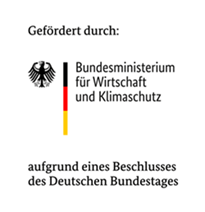
News
Project ModuLA: Information from planning to operation | 06.02.2019
Linking all the Information from the planning and operation phases requires a continous and consistent information model for the entire life cycle. Project ModuLA started end of 2018 to work out the specifications for this integrated approach.
weiterlesen
ENPRO once more at the PAAT meeting | 10.11.2015
This year presented the initiative ENPRO a large proportion of the scientific program of the Annual Meeting of ProcessNet Section "Process, Apartus- and Plant Engineering (PAAT)" on 16 and 17 November 2015 Bruchsal. Prof. Kockmann gave on Tuesday, 11/17/2015, an overview of the ENPRO idea and subsequently showed the individual projects their current results.
weiterlesen
1st ENPRO day was a great success | 29.06.2015
On the 24.06.2015, over 50 experts from the ENPRO initiative met at DECHEMA in Frankfurt am Main, Germany, to discuss the latest results. A World Café was held during this meeting, debating the current developments and developing ideas for the further progress.
weiterlesen
Improved Energy Efficiency and Process Acceleration by Data Integration. From Process Development to Production
A huge, consistent network of information is important for the development and construction of an energy efficient industrial plant. This network has to cover all steps from the first scratch to the final and working site, i.e. the whole life cycle of an industrial plant. On the one hand, information on the energy parameters of various equipment (pumps, heat-exchangers, reactors), like power consumption and efficiency, needs to be accessible at very early stages of the plant development. On the other hand, a “view back” to already taken assumptions and decisions must be available in the later phases of the life cycle in order to optimize the process and maintenance projects on the working site. The main focus of the project therefore will be on:
- a system for the overall life cycle modelling of objects for chemical plants, based on open standards
- an example design of partial models – as well for conventional apparatus and machines as for standardized process units (modules)
- a validation of the beforehand created models, based on technically relevant data, by generation of example system interfaces that support an universal handling of information.
Information, not mandatory for the subsequent steps, is frequently lost at system interfaces. For example, maintenance systems usually do not contain simulation results or values generated during the specification step of an apparatus. This is perfectly reasonable for simplicity and applicability but in some cases one cannot answer the question “Why did we do it like that?” anymore. The longer a plant is operated the more difficult it becomes to trace back all relevant information and by this to assure stable and energy efficient procedures. This means that in the case of maintenance or modification of the system, one might not be able to properly access the original base data. In the case of replacements, it might therefore be very difficult to monitor, which of the relevant run cases are still valid and whether the requirements, e.g. with respect to feed rate or pressure, changed. Even the currently applied design might not be the same as in the original layout.
In this project the interconnections of the various stages of a life cycle, relevant for modelling, will be worked out and documented. Specifications of data structures and their inheritance and retraceability within the life cycle will build up very complex networks – especially for modular structures or modules.
So finally a set of rules for modeling, example models and tests of those models as template for interfaces in technical applications will be the outcome of this project.
Project Start 1st September 2014
Run-time 36 Months
